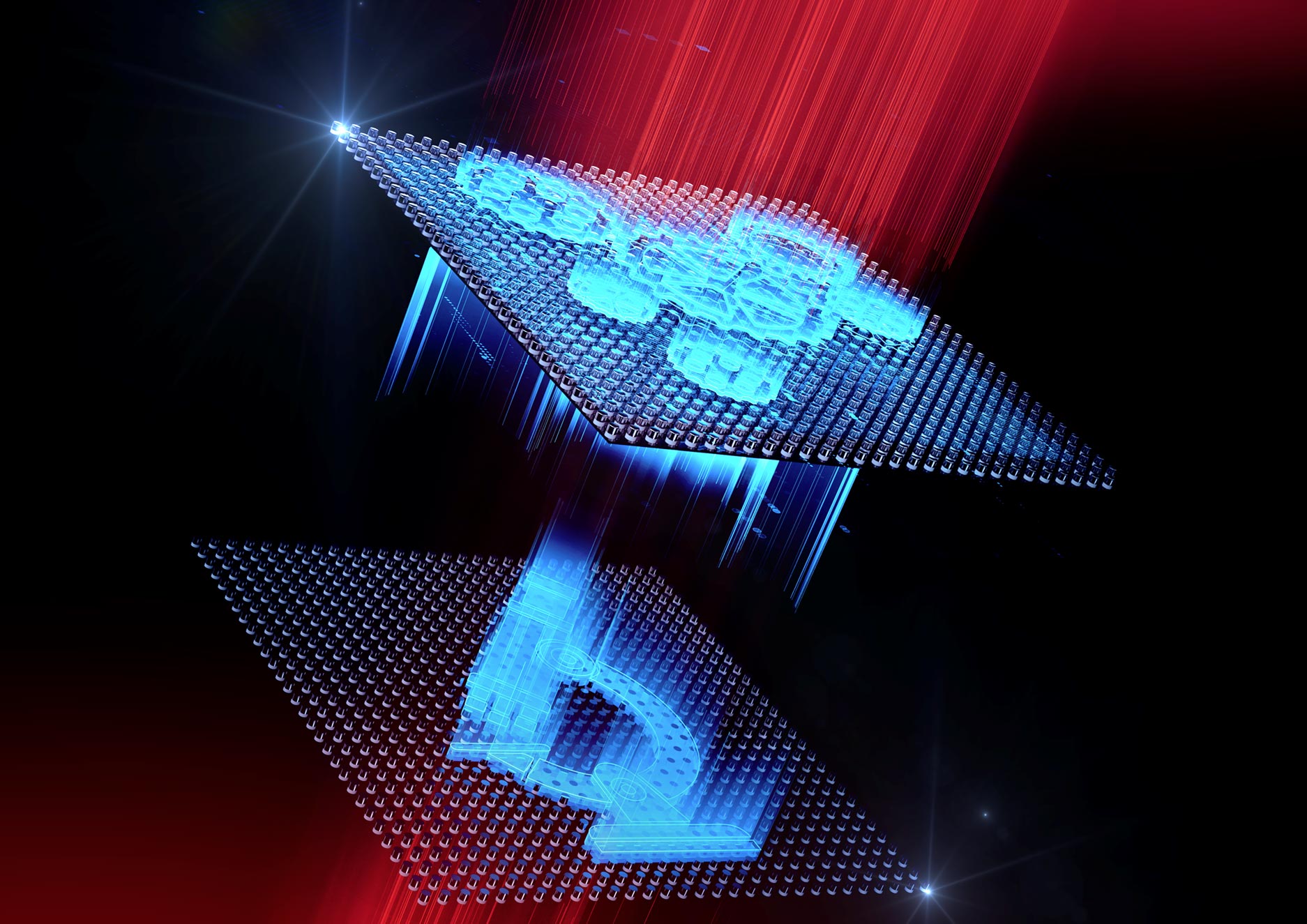
An illustration of the ANU tiny slides. Credit: Ella Maru Studio
Physicists at The
The ability to produce two distinctly different images is possible thanks to the ANU scientists’ ability to control the direction in which light can and can’t travel at the nanoscale. The development could pave the way for new light-based devices that could lead to faster, cheaper, and more reliable Internet. It could also serve as the foundation for many of the technologies of tomorrow.
Developed in collaboration with colleagues from China, Germany, and Singapore, the new technology uses nanoparticles, so small that about 12,000 of them can fit within a cross-section of a human hair. These tiny particles are arranged into unique patterns on the slides.
“The particles control the flow of light like road signs control traffic on a busy road by manipulating the direction in which light can, or can’t, travel,” project leader Dr. Sergey Kruk said.
“Some particles allow light to flow from left to right only, others from right to left or the pathway might be blocked in either direction.”
Dr. Lei Wang, from Southeast University in China said: “While the purpose of these images is mainly artistic, they demonstrate the potential for this new technology.
“In real-world applications, these nanoparticles can be assembled into complex systems that would control the flow of light in a useful manner – such as in next-generation communications infrastructure.”
According to Dr. Kruk, the ability to control the flow of light at the nanoscale ensures light “goes where it’s supposed to go and doesn’t go where it’s not supposed to.”
“We exchange enormous amounts of information with the help of light. When you make a video call, say, from Australia to Europe, your voice and image get converted into short pulses of light that travel thousands of kilometers through an optical fiber over the continents and oceans,” Dr. Kruk, from the ANU Nonlinear Physics Centre, said.
“Unfortunately, when we use current light-based technologies to exchange information a lot of parasitic effects might occur. Light might get scattered or reflected, which compromises your communication.
“By ensuring light flows exactly where it needs to flow, we would resolve many issues with current technologies.”
According to Dr. Kruk, the development of many technologies of tomorrow will rely heavily on our ability to control light at a tiny scale.
“A wide deployment of tiny components that can control the flow of light could potentially bring technological and social changes similar to transformations brought about in the past by the development of tiny components that control the flow of electricity, which are known as diodes and transistors,” he said.
“Control over the flow of electricity at the nanoscale is what ultimately brought us modern computers and smartphones. It is therefore exciting to envision the potential of our emerging technology for controlling flow of light.”
This research was a collaboration between the Nonlinear Physics Centre at the ANU Research School of Physics, Paderborn University in Germany, Southeast University in China and A*STAR Singapore.
The research is published in Nature Photonics.
Reference: “Asymmetric parametric generation of images with nonlinear dielectric metasurfaces” 20 June 2022, Nature Photonics.DOI: 10.1038/s41566-022-01018-7
Source: SciTechDaily